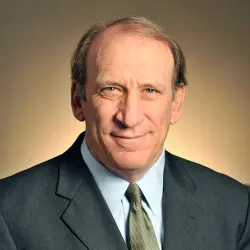Since our team finished work on the 2010 United States National Broadband Plan, I have met with hundreds of local government officials to discuss their own broadband futures. The conversations usually begin with me asking, “Five years from now, do you think your community will have the bandwidth it needs to ensure continued economic growth and social progress?” No public official ever responded, “Yes.”
This answer made it easy to kick off a discussion about what each community could do to accelerate the deployment of next generation bandwidth for their residents and businesses. The most entrepreneurial communities followed through by organizing themselves to improve the math for private investment and were rewarded with improved local broadband networks. In contrast, the communities who waited for the market or the federal government to help are largely still waiting today for improvements.
It’s been less than a decade since the release of the National Broadband Plan, but the evidence is now even stronger that next-generation broadband networks create a number of benefits. Various studies have concluded that such networks result in improved property values, improved economic performance, and lower broadband prices—benefits shared across the general community.
One could take the view that the upcoming deployments of cable’s gigabit service and fifth generation (5G) wireless service should serve all a community’s future needs. But neither prospect suggests that communities should sit back and relax. Early evidence suggests the cable offering will be priced much higher in communities without a competitive gigabit offering than those with competition, potentially limiting community-wide benefits. As to 5G, Wall Street remains skeptical of how quickly or widely it will be deployed. Among other things, the incremental capital costs for wireless carriers are larger in most geographic markets than the likely new revenues, the largest reason being that wireless providers will often cannibalize their current 4G revenues with future 5G services.
Nor should communities count on federal assistance to improve their broadband situation. It is true that there is increasing public support to strengthen federal aid to unserved or underserved communities, particularly in rural areas. For example, the President recently unveiled two executive orders to help rural broadband, by, for example, making it easier to deploy towers on federal land and otherwise make it easier to use federal property for broadband. The FCC just announced $500 million more for rural broadband support, and on Capitol Hill, a bipartisan coalition of senators has asked the President to dedicate billions in the pending infrastructure plan to rural broadband support. And the president himself said that under his plan the country will spend “a great deal” on rural broadband.
These are all good ideas; indeed they were either done or recommended by the National Broadband Plan. Unfortunately, they are not likely to mean much. For example, while putting up towers on federal lands may help in the western United States, most of rural America lives too far from federal land for such towers to make an impact. Neither will the FCC’s $500 million proposal. It is a 10-year number that represents about a one percent increase in the current level of FCC support for rural broadband. By contrast, the FCC in 2016 estimated that connecting rural areas to next generation broadband is a $40-80 billion challenge. While I agree with the senators, I am skeptical that the current economic and political climate is likely to lead to significant new funding for rural broadband specifically or infrastructure more broadly. As to the President’s promise to spend “a great deal” on the problem, a close analysis of what the plan actually does suggests otherwise.
Put simply: none of these ideas materially change the problematic math of private investment for next-generation networks for most communities.
What is far more promising, however, are a number of models of community-led upgrades that did not exist in 2011. Every initiative has to determine how to approach designing, financing, constructing, and equipping a network; and creating, marketing, and servicing the product for the customer. The models differ in which of these functions are handled by the public and which are left to the private sector. Indeed, a number of models, such as those pioneered by the North Carolina Research Triangle Park communities, leave most of those functions to the private sector. Others, like Lincoln, Nebraska, have used a dark fiber model that enables private sector carriers to more rapidly and efficiently roll out next-generation services. Still others, like rural electric co-ops, take on the full responsibility for the network and the service.
Communities should study and emulate the models that clearly improve the math for investment in next-generation networks, regardless of the public or private delineation. Yet choosing an upgrade model will not be simple; communities should reflect their preferences between certain trade-offs, from control and risk to scale through aggregation or local control. Yet the multitude of new alternatives creates the best opportunity yet for communities to control their gigabit destiny.
Communities should study and emulate the models that clearly improve the math for investment in next-generation networks, regardless of the public or private delineation.
As is always true with local economic development, help begins with self-help. Communities that have organized themselves to improve the math for investment have often succeeded in seeing that investment follow. Those who have sat back and waited for the market or the federal government to help are largely still waiting today and are likely to continue to be waiting for some time to come. One can hope that markets or the federal government will address everything, but for many communities, their own action is what really will count.
(These comments were derived from a speech recently delivered to a group of local political and business leaders in Western North Carolina. The full speech is also reprinted in whole.)
The Brookings Institution is committed to quality, independence, and impact.
We are supported by a diverse array of funders. In line with our values and policies, each Brookings publication represents the sole views of its author(s).






Commentary
Communities can’t afford to wait for the federal government to obtain next gen broadband
February 16, 2018